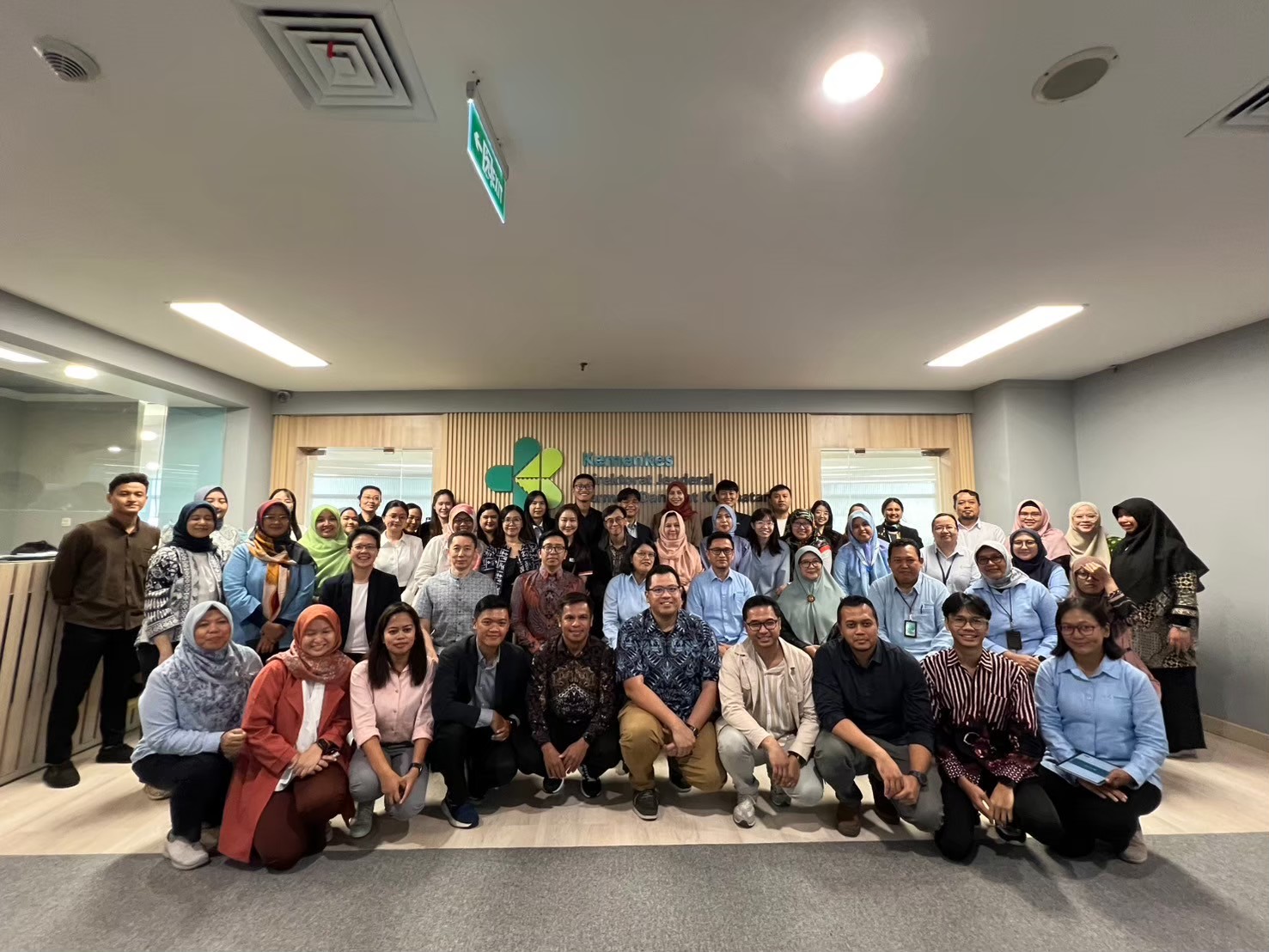Strengthening Health Technology Assessment in Asia: Insights from the 3rd Regional Workshop on Advanced Economic Evaluation Modeling



http://www.nytimes.com/2012/06/07/health/tests-of-parents-are-used-to-map-genes-of-a-fetus.html?_r=1&pagewanted=2&partner=rss&emc=rss
For the first time, researchers have determined virtually the entire genome of a fetus using only a blood sample from the pregnant woman and a saliva specimen from the father.
The accomplishment heralds an era in which parents might find it easier to know the complete DNA blueprint of a child months before it is born.
That would allow thousands of genetic diseases to be detected prenatally. But the ability to know so much about an unborn child is likely to raise serious ethical considerations as well. It could increase abortions for reasons that have little to do with medical issues and more to do with parental preferences for traits in children.
“It’s an extraordinary piece of technology, really quite remarkable,” said Peter Benn, professor of genetics and developmental biology at the University of Connecticut, who was not involved in the work. “What I see in this paper is a glance into the future.”
The paper, published Wednesday in the journal Science Translational Medicine, was written by genome scientists at the University of Washington. They took advantage of new high-speed DNA sequencing and some statistical and computational acrobatics to deduce the DNA sequence of the fetus with about 98 percent accuracy.
The process is not practical, affordable or accurate enough for use now, experts said. The University of Washington researchers estimated that it would cost $20,000 to $50,000 to do one fetal genome today.
But the cost of DNA sequencing is falling at a blistering pace, and accuracy is improving as well. The researchers estimated that the procedure could be widely available in three to five years. Others said it would take somewhat longer.
It is already possible to determine the DNA sequence of a fetus by acquiring fetal cells through amniocentesis or chorionic villus sampling, which involves testing the placental tissue. But these procedures are invasive and carry a slight risk of inducing a miscarriage.
For couples worried about passing on a genetic disease, it is also possible to use in vitro fertilization and have an embryo genetically tested before implantation into the womb.
But the technique described in the paper would not require complete cells from the fetus and would make such DNA testing easier and less risky.
“If this sort of thing is ever to be used on a widespread basis, I think it necessarily has to be noninvasive,” said Jay Shendure, associate professor of genome sciences at the University of Washington, who supervised the research team.
The genome was determined from blood samples taken 18.5 weeks into the pregnancy, although the researchers said the technique could probably be applied in the first trimester, as early as or even earlier than some invasive techniques.
The technique takes advantage of the discovery in the 1990s that fragments of DNA from the fetus can be found in a pregnant woman’s blood plasma, probably the result of fetal cells dying and breaking apart.
These fragments can be genetically analyzed, providing that the fetal DNA fragments can be distinguished from the far more numerous fragments that come from the mother herself.
The analysis of fetal DNA fragments found in a pregnant woman’s blood is already used in new commercially available tests of the fetus’s gender, its paternity and whether it has Down syndrome. But reconstructing an entire genome from DNA fragments is much more difficult.
Such information would allow detection of so-called Mendelian disorders, like cystic fibrosis, Tay-Sachs disease and Marfan syndrome, which are caused by mutations in a single gene.
More than 3,000 such diseases collectively occur in about 1 percent of births. The mutations can be inherited from the parents or they can arise spontaneously in the fetus.
Researchers led by Dennis Lo at the Chinese University of Hong Kong first showed in 2010 that reconstructing a fetal genome would be possible. Other work toward this goal has been done by Stephen Quake and colleagues at Stanford University.
But Dr. Lo’s team used a maternal sample obtained invasively. And it could determine only the inherited mutations, not the spontaneous ones.
The University of Washington researchers, using an approach partly developed by a graduate student, Jacob O. Kitzman, did not need an invasive test. And they were able to detect 39 of 44 such spontaneous mutations, though with a huge number of false positives.
“This will be a step toward having a better and better prenatal diagnosis that detects more and more at a reliable cost,” said Dr. Arthur L. Beaudet, chairman of molecular and human genetics at Baylor College of Medicine in Houston.
Dr. Beaudet, who was not involved in the work, said that spontaneous mutations account for about 10 percent of cases of mental retardation and other learning disabilities.
The ability to sequence an entire fetal genome is likely to raise numerous issues. “There are some scenarios that are extremely troubling,” said Marcy Darnovsky, associate executive director of the Center for Genetics and Society, a public interest group in Berkeley, Calif. The tests will spur questions on “who deserves to be born,” she said.
Use of the approach could lead to an increase in abortions because some parents might terminate the pregnancy if the fetus was found to have a genetic disease. But it is also possible that parents may be tempted to terminate if the fetus lacked a favorable trait like athletic prowess.
“You could start doing things more toward the direction of positive selection,” said Dr. Stephen A. Brown, associate professor of obstetrics and gynecology at the University of Vermont.
Moreover, a full fetal genome sequence would turn up numerous mutations for which information is lacking as to whether they cause disease, posing a dilemma for expectant parents and their doctors.
“Our capacity to generate data is outstripping our ability to interpret it in ways that are useful to physicians and patients,” the University of Washington researchers wrote their paper. “That is, although the noninvasive prediction of a fetal genome may be technically feasible, its interpretation — even for known Mendelian disorders — will remain a major challenge.”
The researchers sequenced the genomes of the mother and father. They then sequenced nearly three billion DNA fragments from the mother’s blood. The samples, obtained from a tissue bank, were from unknown donors.
Since people have two copies of each chromosome, they have two versions of each gene. Only one version is passed to the baby.
Determining which version at any given spot in the father’s genome was passed to the fetus was fairly straightforward, since any fragments of DNA in the mother’s blood containing a sequence unique to the father had to have come from the fetus.
Determining which of two variants at a given location — call them A and B — the fetus inherited from the mother was more difficult. If the fetus inherited version A, then fragments containing A (which could come from either the fetus or the mother) would outnumber fragments containing B (which could come only from the mother). But since there are relatively few fetal fragments, the difference would be small and hard to detect.
The researchers used an approach they developed to figure out which variations in the mother’s genome were likely to be passed to the baby together. That made the problem more tractable than trying to make a call individually at three million locations in the genome.
After it was determined what the fetus inherited from the mother and father, what was left in the fetus’s DNA was considered a possible spontaneous mutation. There were initially 25 million such candidates, though statistical approaches narrowed that to 3,800. That still vastly exceeded the 44 such spontaneous mutations found after the baby was born and its cord blood sequenced. Having so many false positive findings of spontaneous mutations could worry parents and doctors.
“There’s definitely plenty of room for improvement,” Professor Shendure said. But, he added, “This is not science fiction anymore.”